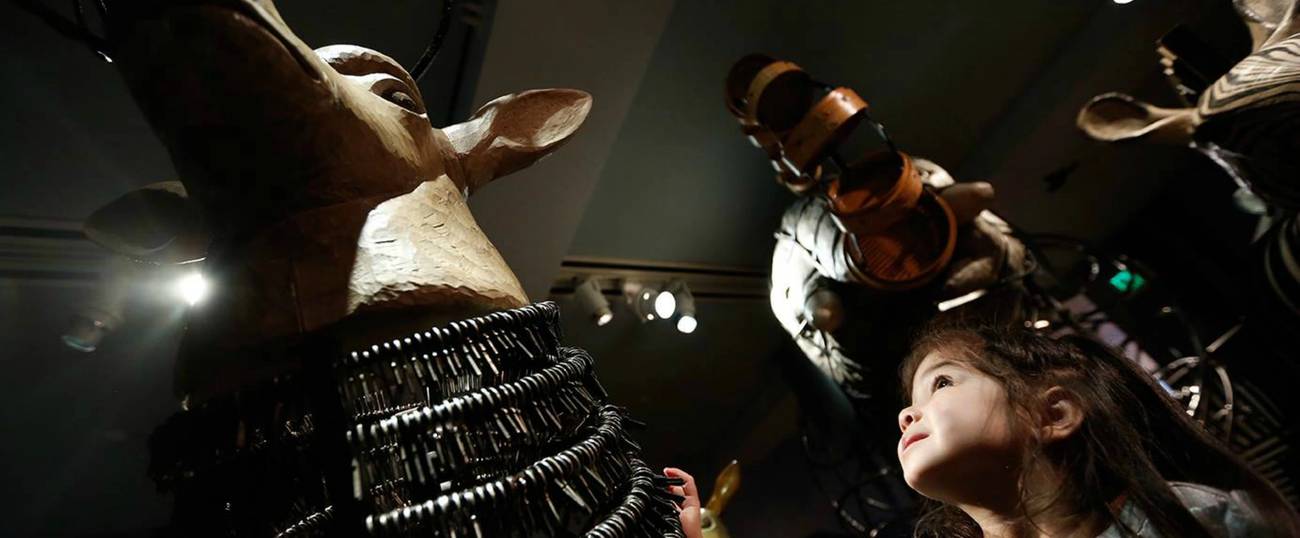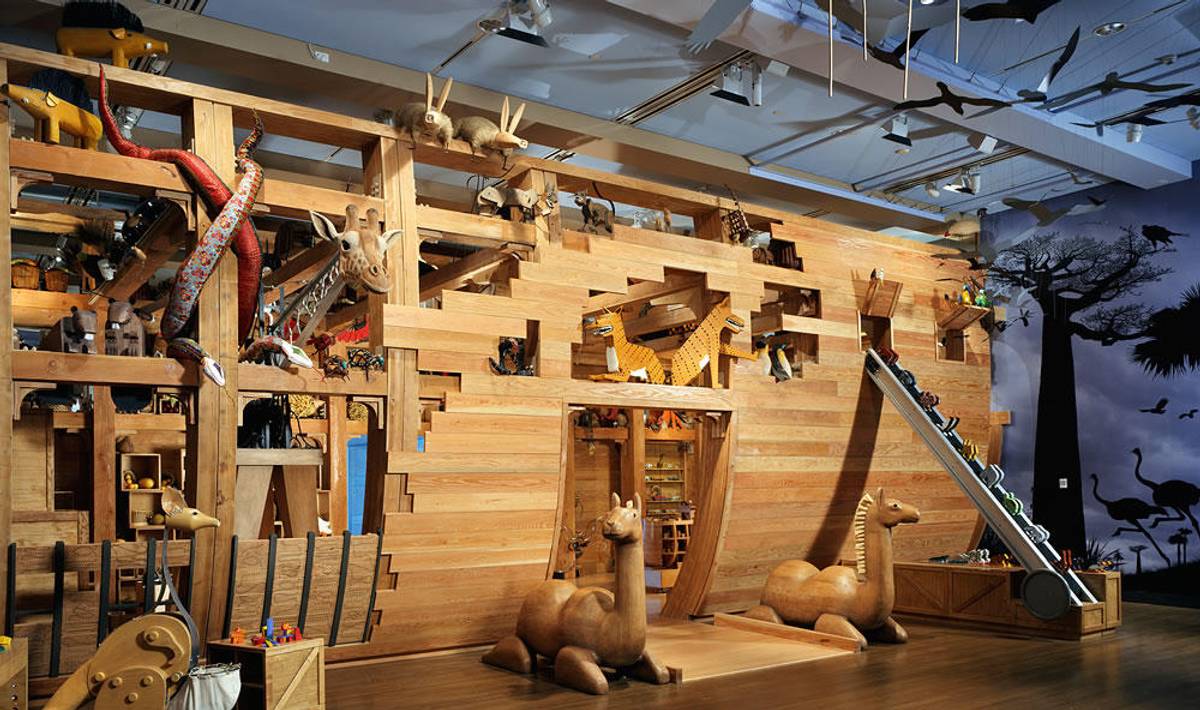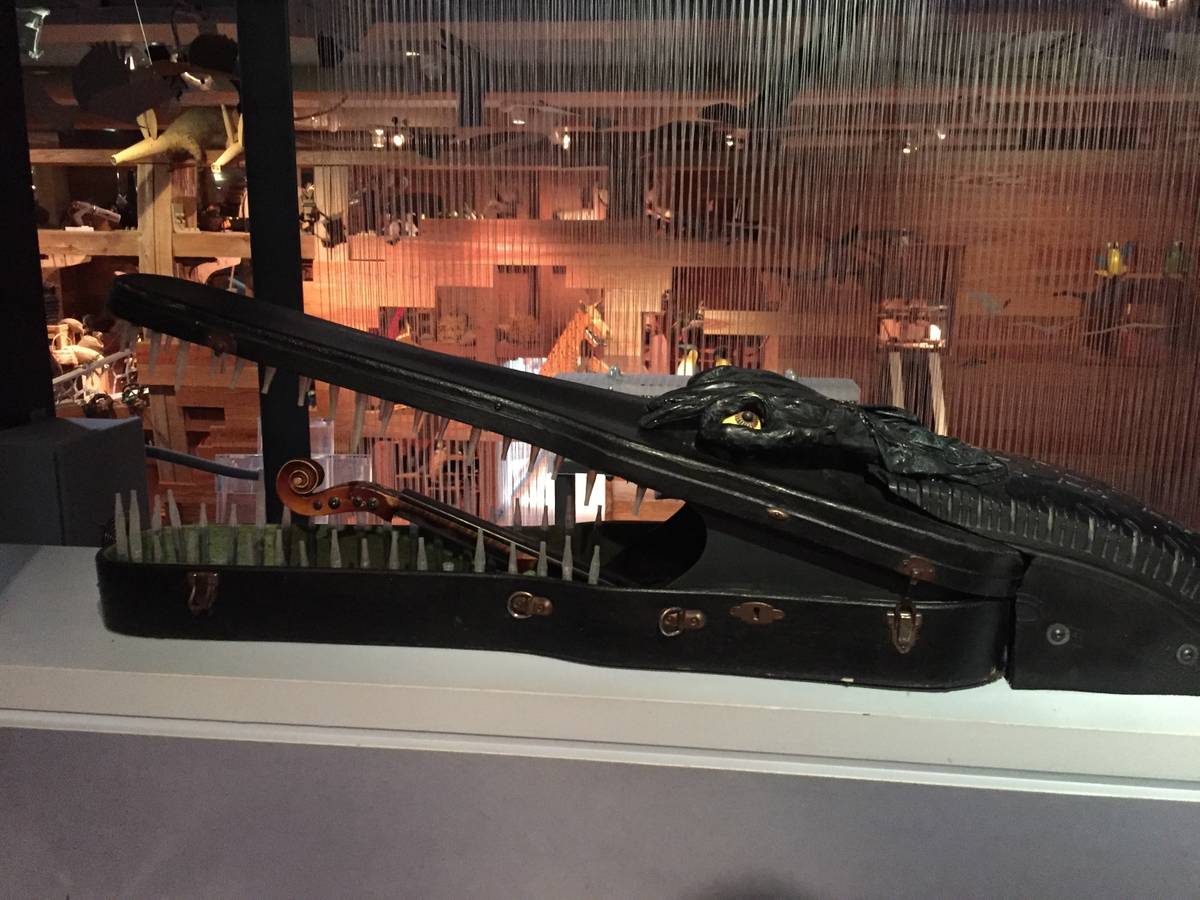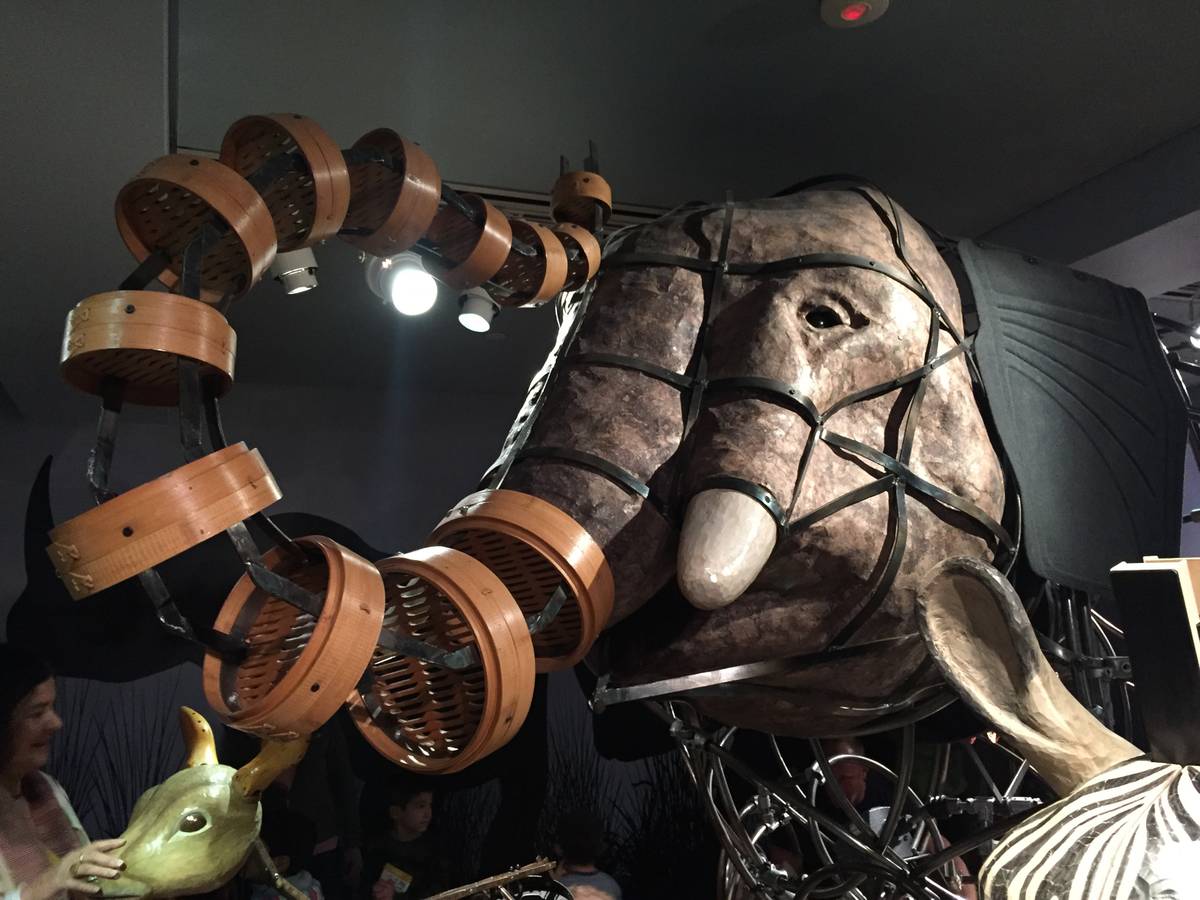Inside Noah’s Ark—the Playground, That Is
An art installation at Los Angeles’s Skirball Cultural Center—a tough ticket—nurtures play, community, and environmentalism




LOS ANGELES — The Skirball Cultural Center’s Noah’s Ark exhibit opened in 2007, but it’s still a tough ticket. Visitors have to purchase tickets in advance; admission is timed and time-limited; every time slot sells out; and strings had to be pulled to let a reporter check it out on the spur of the moment. And it’s worth it.
The sprawling 8,000-foot gallery in the Santa Monica mountains, not far from the Getty Center, houses a 65-foot ark made of sustainable hardwood; dozens of painted wooden animals for kids to play with; and a rigging-like ropes course containing 30,000 hand-tied knots in a series of tunnels, suspension bridges, catwalks and climbing areas.

Visitors enter the space and are confronted with a long “conduct-a-storm wall” featuring an array of tubes, cranks and instruments. They’re invited to create the Biblical rain themselves, pushing air into a cylinder to stir up a cyclone of wind that swirls leaves higher and higher; pumping water into a tank to make a tiny wooden ark float on a rising tide; creating crackling bolts of lightning to arc overhead; using a variety of shakers to create the sounds of a hurricane.
Kids can help build the ark by sliding wooden blocks into a ship-shaped metal frame and lifting sandbags on pulleys to pass along to another builder higher up. They can steward animals to shelter by placing them two-by-two into slots on a conveyor belt that they hand-crank to move upward into the ark. There is no Noah, because all visitors have the potential to be Noah. “We wanted to focus on the dignity and potential of every individual,” according to Sheri Bernstein, the project’s director of education, “and to instill in children and families a belief in their ability to make a difference in the world.” Educators throughout the space lead kids in animal-like dance moves, interact through animal puppets, point out handholds and footholds, and help kids create art.
For adults, the highlight of the show is the menagerie created by Brooklyn-based “kinetic sculptor” Chris Green, with hand-carved wooden heads by Eric Novak and fabric “skins” by Erin Wilson. Most are constructed from repurposed and recycled materials and depict threatened and endangered species. There’s a huge Asian elephant with a trunk made of Laotian bamboo steamers, a Thai gong for a body, and Nepalese lokta paper for skin. Another elephant is made entirely of rattan, except for its sparkling little disco-ball eyes. A zebra has a mane made of a keyboard, a body made of wind turbines kids can spin, and ears made of shoehorns. A kiwi bird sports a badminton shuttlecock head, an oilcan beak, a boxing glove body and paintbrush legs. A deer displays a John Deere tractor seat derriere. A porcupine flaunts cleaning-brush quills and a curly telephone cord tail. A sheep shows off a bicycle seat head, bicycle handlebars for horns, and an exuberant mop body. An old white cast-iron bathtub is a polar bear. A crocodile’s gaping mouth is made from a violin case (evoking the threatening associations of violin cases in film noir), with a long, curling tongue made from the violin’s neck and scroll. And presiding over the interior of the ark are a lion and a lamb, cuddled side-by-side. The lamb is made of rearview mirrors and tufted wool; the lion has chopstick whiskers and a huge straw mane.

My favorite creation: A flamingo with splayed fly-swatter feet, wingtips made of plastic combs, a vintage ladylike pink purse body, and a long neck made of stacked spools of pink thread in every shade of pink you can imagine. With each of the 46 sculptures in the show, your brain first identifies the animal, then tries to parse the component parts. The act of admiring a creature and its incongruous construction—at nearly the same time—reminds me of the wonder of seeing The Lion King on Broadway many years ago.
Also of interest is the collection of small art arks from around the world, a reminder of the hundreds of cultures that have had flood narratives. There’s something primal about this story, with its themes of fury and destruction, a small community braving the terrors of nature together, the promise of building a better world with cooperation and kindness. The exhibit’s design, by the architectural firm of Olson Sundberg Kundig Allen (now known as Olson Kundig), was spearheaded by Alan Maskin, head of the firm’s exhibition design studio, who has a background in early childhood education—and it shows.

The last room of the exhibit is a quiet art studio and reading room where visitors can process what they’ve learned. The walls change color, from day to night, from bright light to moody storm dark. Sometimes a rainbow appears. The room’s centerpiece is a “book tree,” with wooden birds nesting (one nest hangs from a kitchen whisk) and little tufts of green tulle sprouting from its trunk, looking like particularly balletic moss. Slats in the trunk hold children’s books about Noah’s ark and the environment, with plenty of room around the trunk for kids to sprawl and read. There’s an arts and crafts area with recycled scraps of fabric and those ubiquitous green plastic pint-size strawberry boxes; visitors who are so moved can create their own nest or ark. Roaming helpers with tablets invite kids to think about how they can help build a better world—they take your photo, and you soon see your face and your vow projected onto the wall of the gallery. The message: We’re all in this together.
Right outside the indoor ark is an outdoor play and strolling area featuring a 100-foot-long, 12-foot-high curved metal sculpture (designed by MacArthur-“genius grant”-winner Ned Kahn in consultation with the Skirball’s designer, Moshe Safdie) that evokes both a rainbow and the prow of a ship. The arcing, perforated stainless steel wall contains mist sprayers that can fill the air with tiny water drops, and, of course, refracted rainbows. But the sprayers are currently turned off in deference to California’s drought conditions—it’s a bummer…but it also seems fitting, given the conservationist themes of the show and the Noah story itself.
Marjorie Ingall is a former columnist for Tablet, the author of Mamaleh Knows Best, and a frequent contributor to the New York Times Book Review.